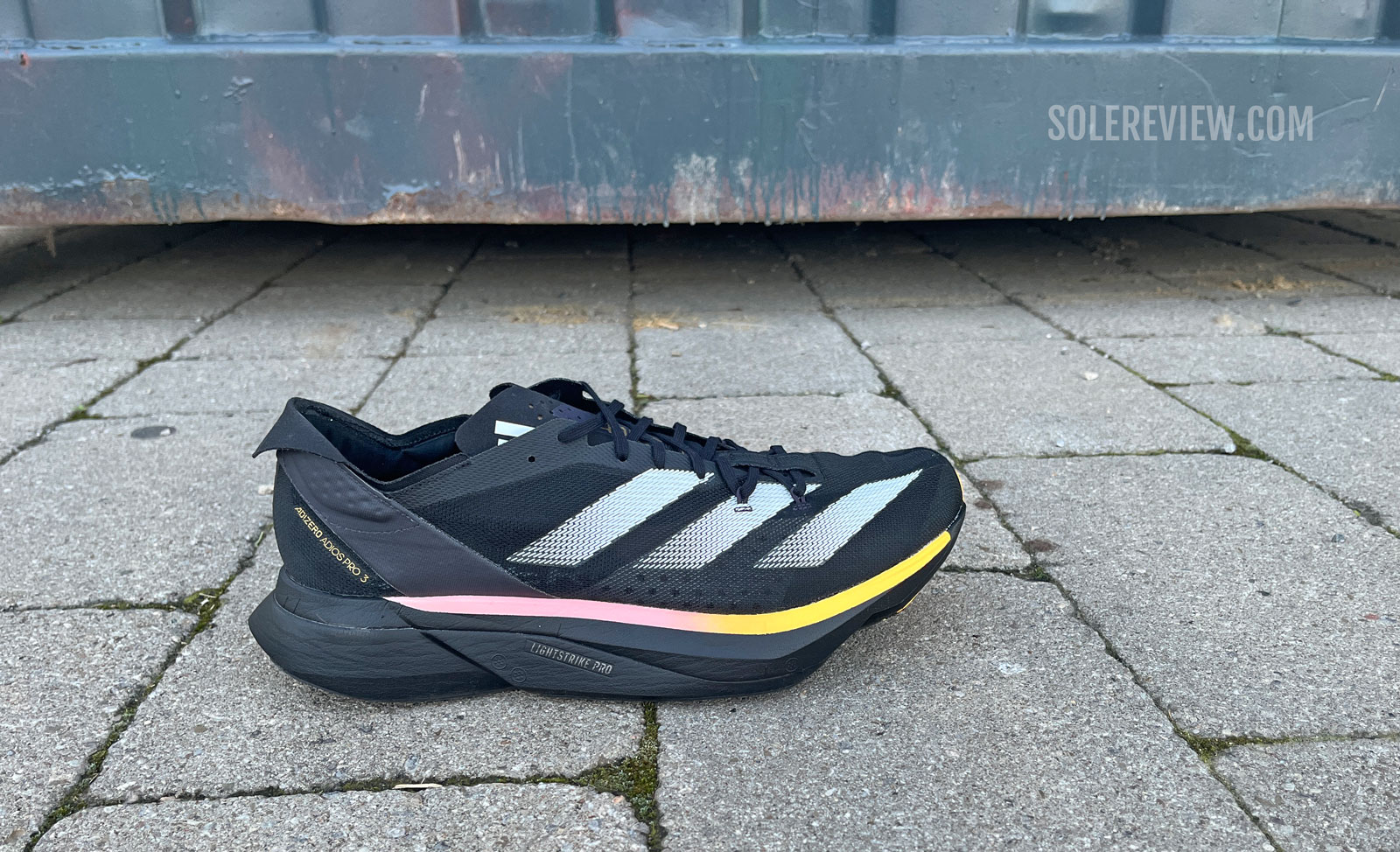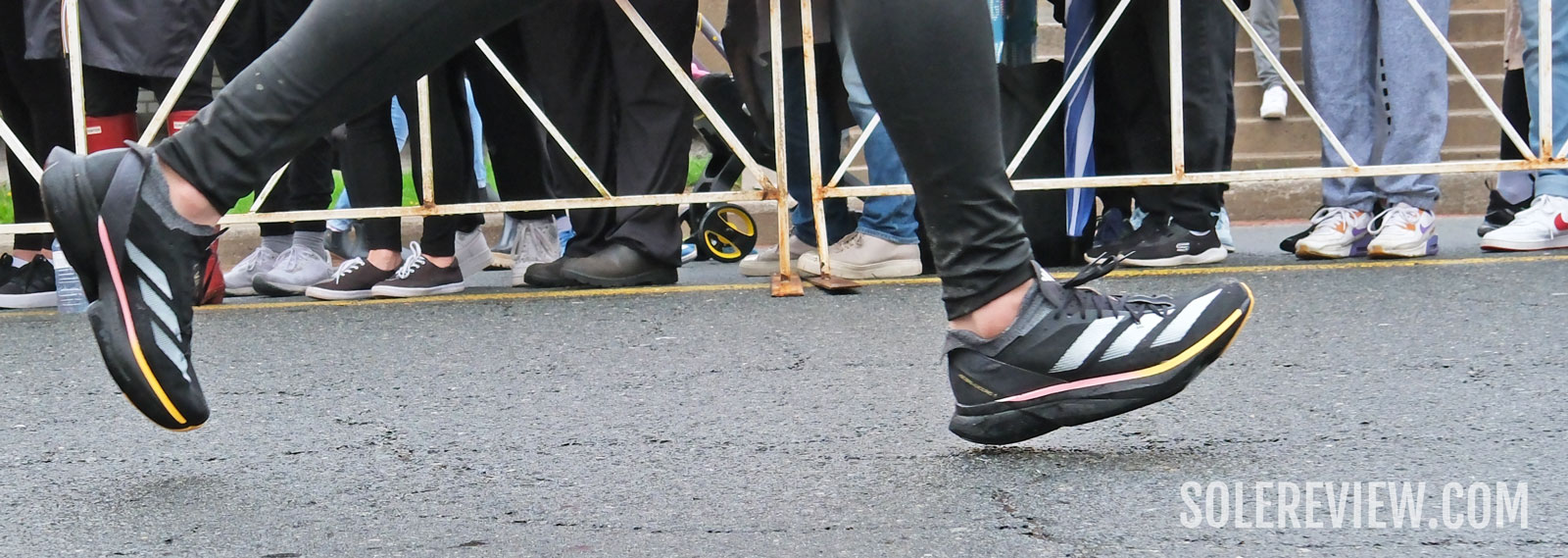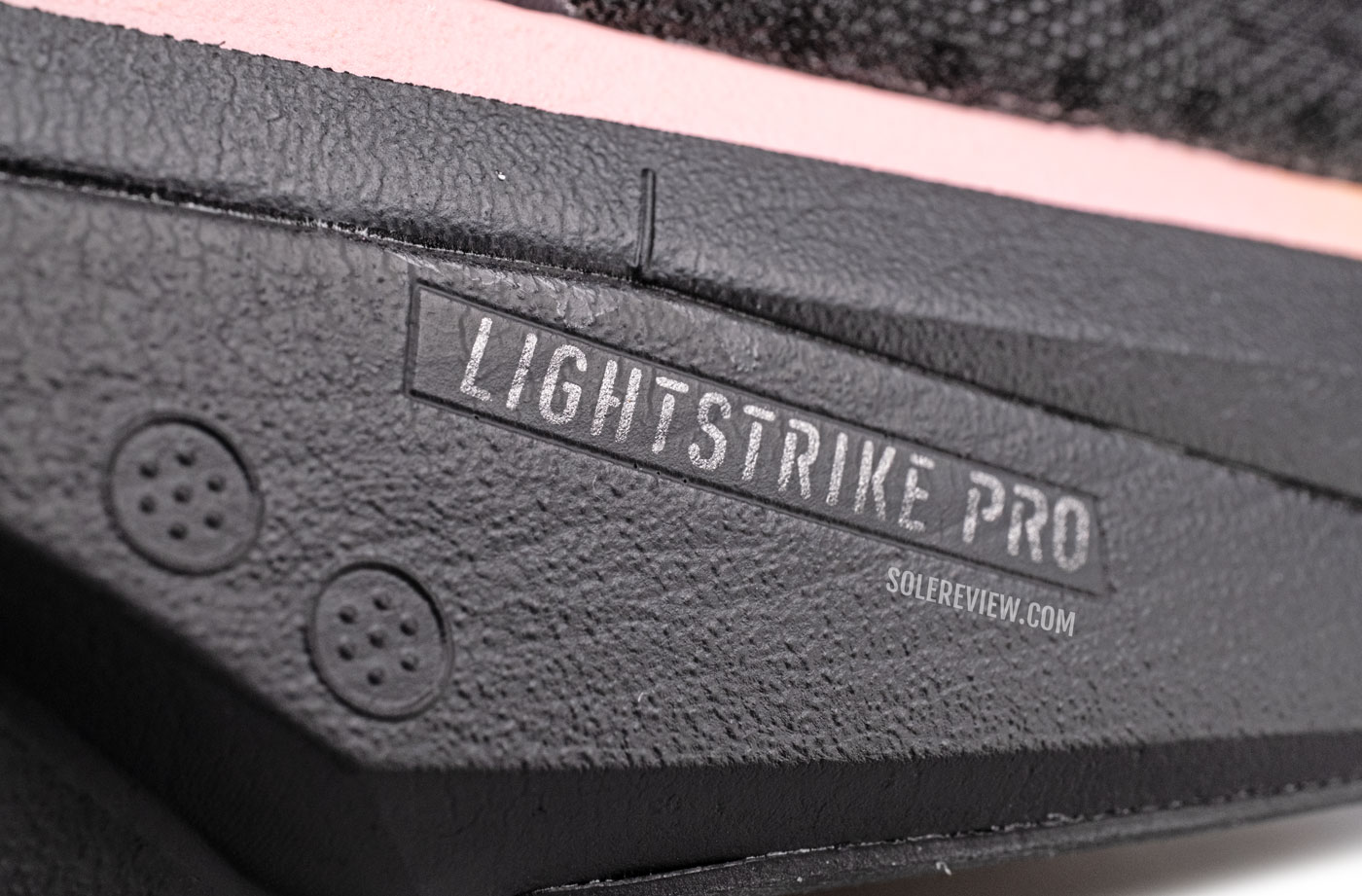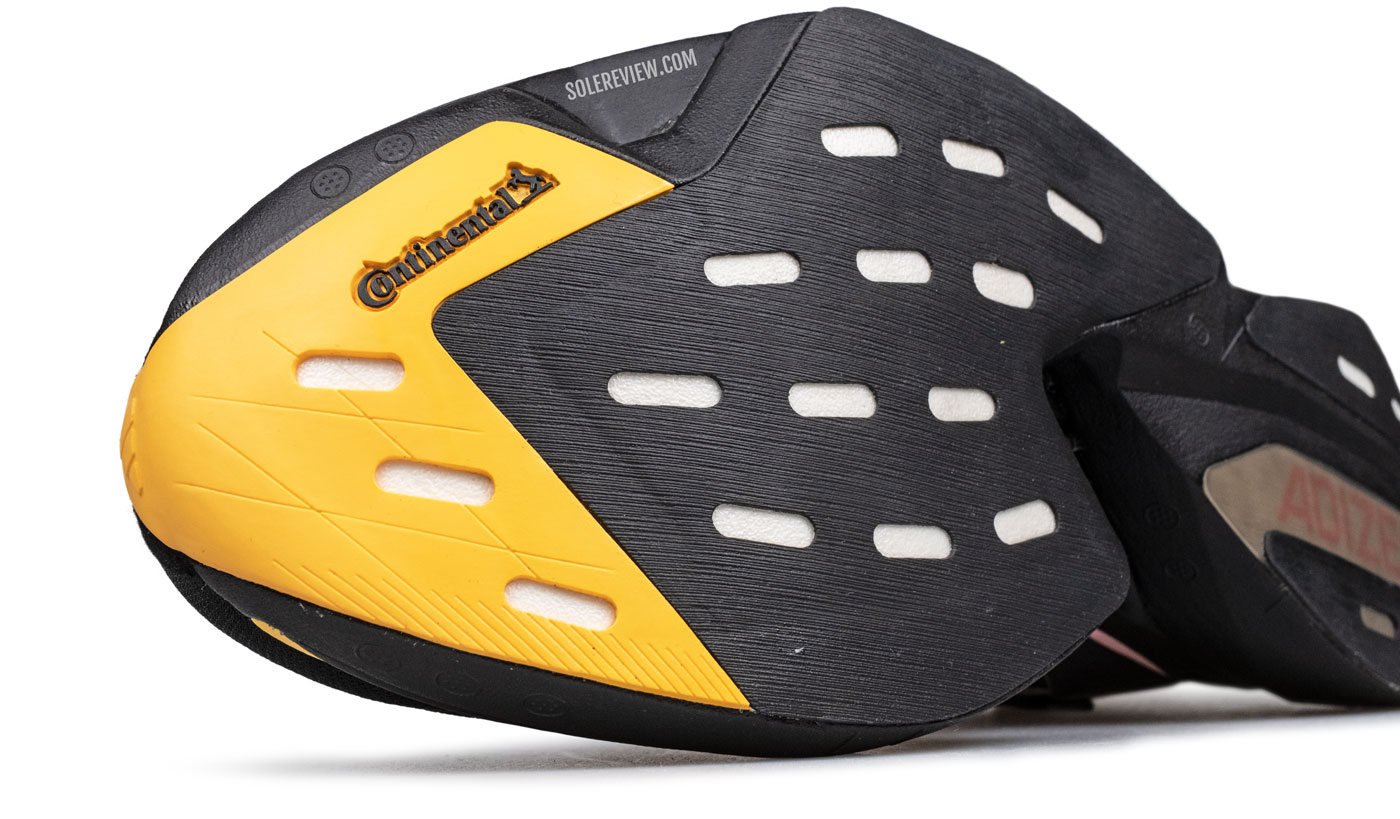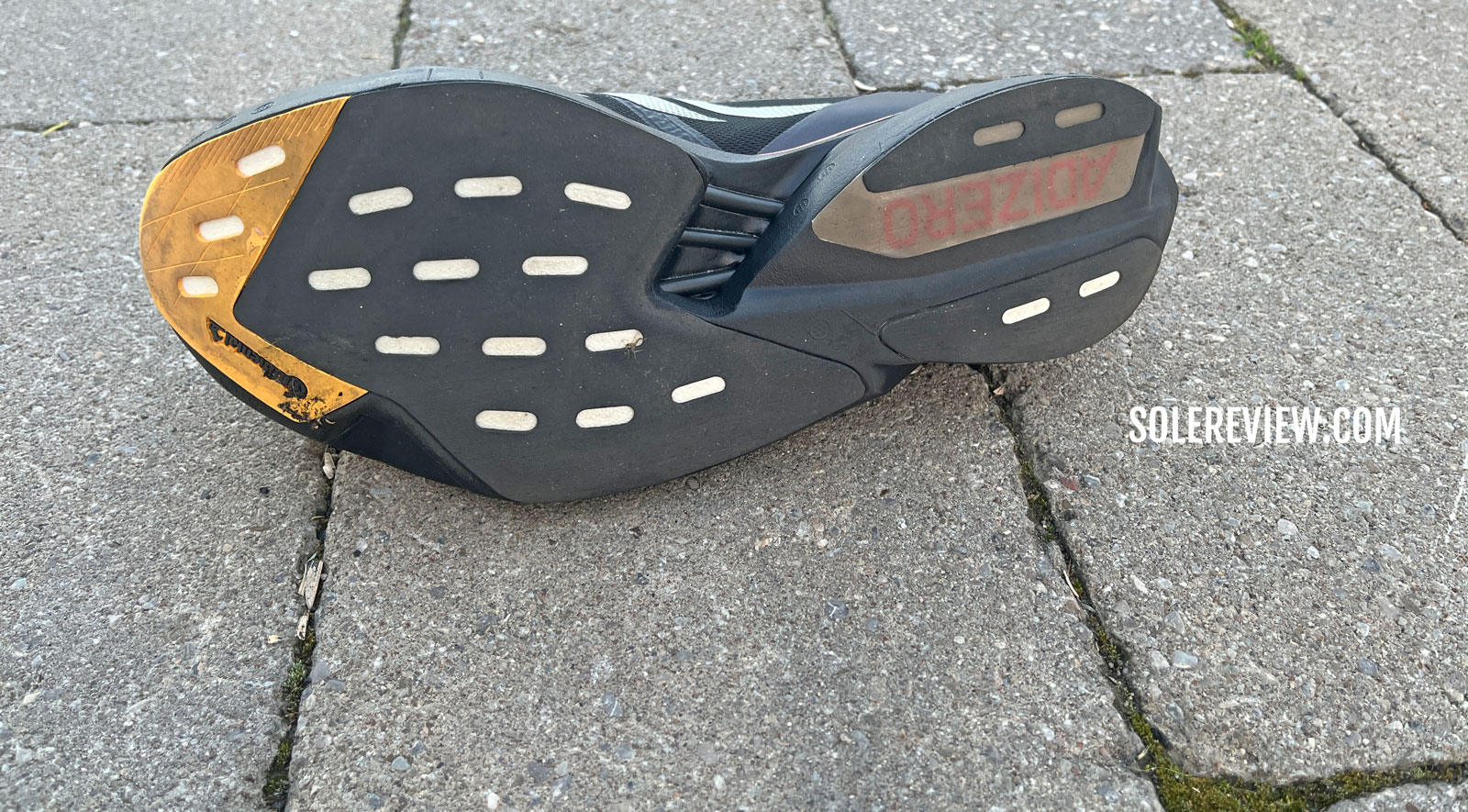‘Supershoe’ is a term often used to describe running shoes that either use a Carbon-infused plate, high-tech foam, or both. They are designed to blend a speed-friendly ride character with long-distance comfort – a tall ask before Carbon-plated racers showed up.
It all began with the Nike Vaporfly – a cushioned racing shoe that combined a curved Carbon plate with a soft PEBA foam midsole. The Vaporfly created a brand-new (and may we add, lucrative) industry of similar products, all with their quirks and unique personality traits.
Some plated shoes work better for longer distances. Others are a better fit for faster speeds and shorter distances. On some shoes, the midsole geometry favors midfoot and forefoot strikers. And finally, certain models are their best only at higher running speeds – think sub 4:00 min/km (6:30 min/mile) pace.
So we had to pick just one shoe from this category, which would it be? Until something better comes along, the adidas adizero adios Pro 3 is as close as you’ll get to a one supershoe for everything. Here’s why:
The adidas Adios Pro 3 is rearfoot strike-friendly
Unlike some plated racers, it’s perfectly okay to heel strike on the Adios Pro 3. Sure, you won’t find the same level of heel stability a regular trainer would have, but it’s pretty good for a midsole with a 39 mm heel stack.
The Lightstrike Pro foam is not too soft, and the flat rubber outsole creates a supportive base. The Energy Rod insert forms a stiff loop under the heel and keeps the foot from sinking in.
It doesn’t need to be said that the Adios Pro 3 works equally well for midfoot and forefoot strikers.
The Energy rods – not plates – give the runner greater control
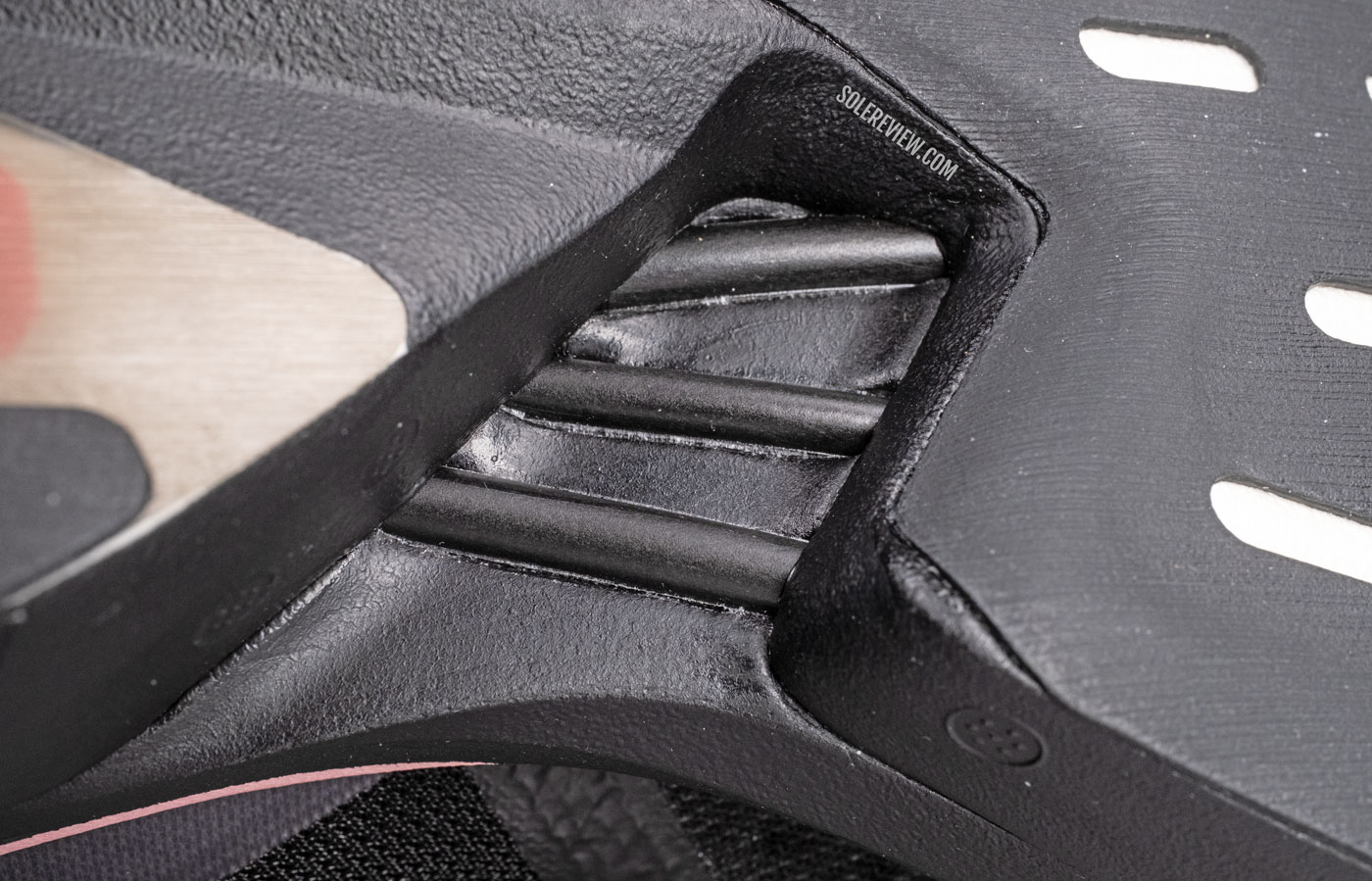
The Energy rods – tubes – don’t behave like a plate and give the wearer more control over the ride experience.
Most supershoes with a rigid plate (usually in a curved shape) make the rocker effect pronounced, but tend to be more controlling during the toe-off phase. A plate also requires faster speeds to take full advantage of what the shoe has to offer.
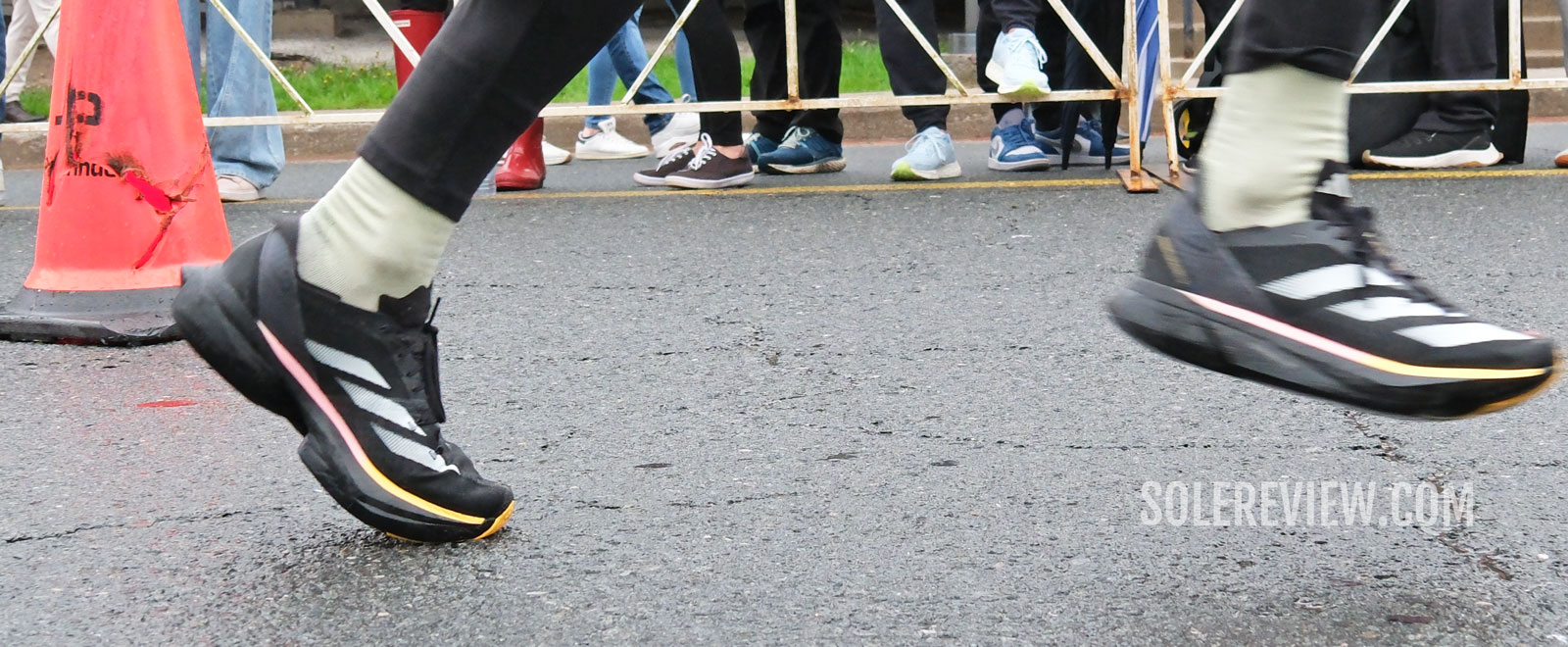
The Energy Rods-equipped Adios Pro 3 has a pronounced rocker effect, allowing for smoother toe-offs.
The Adios Pro 3’s energy rods behave differently. The rocker – or ‘tip forward’ effect – is noticeable, but the fork-like shape of the Energy rods gives the runner more control.
Unlike a flat plate, the rods flex to a certain extent when loaded. After the break-in period, the rods are slightly easier to flex, thus making the forefoot softer. The relatively flexible Energy rods also make the Adios Pro 3 suitable for slower runs – all without a drop in the overall performance.
The Lightstrike Pro foam is the bounciest of them all
As a standalone material, the adidas Lightstrike Pro foam is more bouncy than PEBA and Supercritical foams. This springy character is available at all speeds, be it at easy cruising mode or sub 4:00 min/km paces.
The Continental rubber outsole has an excellent grip
Not much needs to be said about Continental rubber’s performance on wet and dry roads. You can depend on the adios Pro 3 to deliver reliable traction regardless of the weather conditions – except for icy conditions, that is.
It’s more durable than most supershoes
Not only does the Continental rubber outsole grip well, but it also lasts long. There’s also a lot of it covering the midsole, so the Lightstrike Pro foam is protected from early wear and tear.
The midsole foam is also resistant to creasing and compression fatigue – meaning that Lightstrike Pro has excellent cushioning longevity. The foam also doesn’t stiffen in freezing temperatures.
The durable build quality, when combined with the user-friendly midsole design, offers more miles per dollar spent.
Do you own this shoe? Improve this review by sharing your insights.

